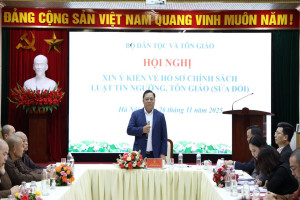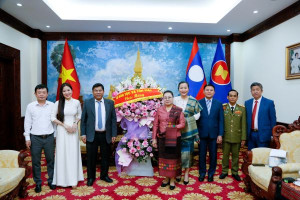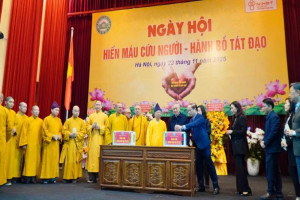
A program “Mother Goddess Worship – Vietnamese Spiritual Destination” took place in Hanoi on August 23 on occasion of the 2nd anniversary of the UNESCO’s recognition of the Mother Goddess worshipping practice as an intangible cultural heritage of humanity.
The program featured Hau Dong rituals of Three Palaces as well as introduced colorful and unique costumes used by mediums during spiritual entrance sessions.
In particular, mediums and their assistants performed sessions of going-into-trance rituals by spirits of six famous deities or gods, such as Quan De Ngu, Chau De Nhi, Quan Hoang Muoi, etc.

In Hau Dong rituals, different costumes are chosen for sessions representing different deities
Devoted to female deities, the worship of mother goddesses is a popular faith in Vietnam. In Mother Goddess worship, hau dong (which loosely means 'to mount the medium' or 'to go into a trance') is the most important step.
Three Palaces in the Mother Goddess includes Thien Phu (Heaven), ruled by Mau Thuong Thien (Mother Goddess of the Upper Sky), Nhac Phu (Forest) ruled by Mau Thuong Ngan (Mother Goddess of the Forest) and Thuy Phu (Water) ruled by Mau Thoai (Mother Goddess of Water).
During hau dong rituals the ceremony, mediums (who are believed to be chosen by deities at birth) and their assistants often dressed in bright costumes perform folk dances and petition the goddesses to descend and possess their bodies.
When spirits are believed to have entered the body, the medium will appear to change personalities. From that point onward, all actions and words are said to be those of the spirit.

Hau Dong session representing spirit of Thuong Ngan girl
The practice of the belief in Mother Goddesses was recognized by UNESCO as an intangible cultural heritage of humanity in December 2016.
PTT




